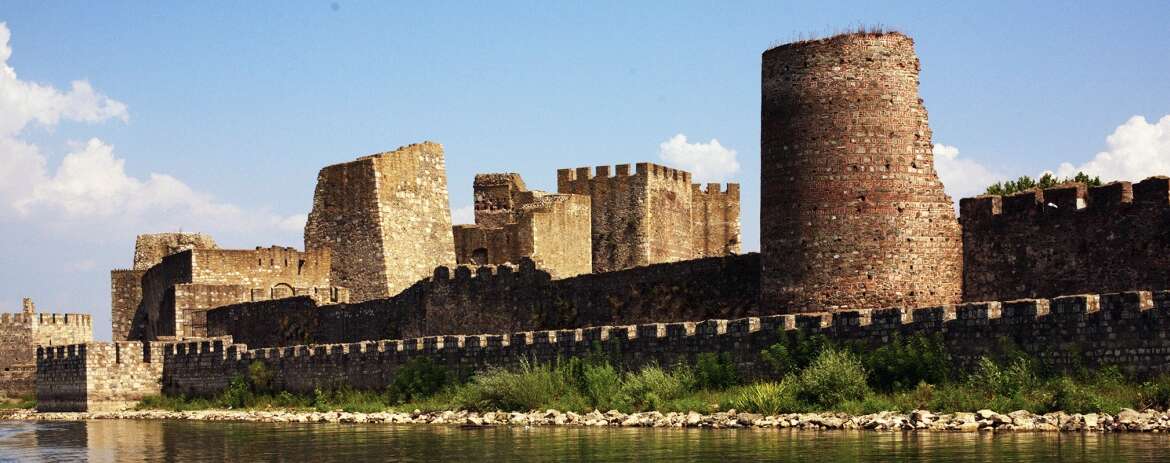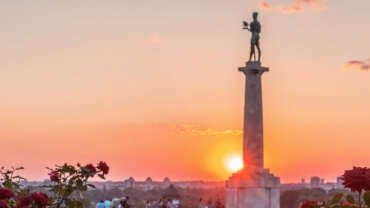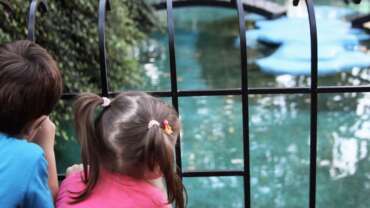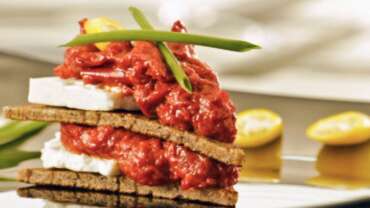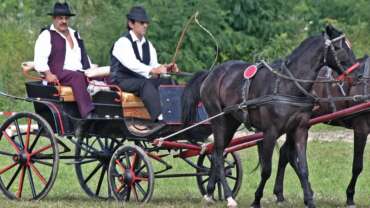Thematic Routes of Serbia
Adventurers can choose between many interesting thematic routes – with so many options to choose from, even the most demanding travelers will find something to satisfy their needs!
Discover Serbia’s numerous treasures, from the fairytale-like medieval monasteries to major electrical engineering discoveries.
The Roman Emperors and Danube Wine Route and Transromanica have been included in the Cultural Routes of the Council of Europe, which aim to demonstrate how the heritages of different cultures contribute to Europe’s shared cultural heritage.
The Roman Emperors and Danube Wine Route includes visits to archaeological sites of the ancient Roman period and a tour of the regions where wine has been produced in continuity from the times of classical antiquity to the present day. The Transromanica route will take you through as many as nine countries and dozens of unique Romanesque buildings.
The Tour of Danube Fortresses gives you an opportunity to explore ancient and medieval fortresses lined along Europe’s most beautiful river.
Admirers of Nikola Tesla can follow the route taken by the legendary scientist when he stayed in Belgrade in 1892 and can also visit the Nikola Tesla Museum in Belgrade, which displays many of his inventions and documents, as well as his personal items.
Whichever route you choose, rest assured you will explore Serbia like never before!
So, grab your bags and get ready to experience it from a completely different perspective!
Roman Emperors Route
Although it vanished into the mists of time centuries ago, the Roman Empire continues to fascinate numerous researchers, archaeologists and lovers of history and culture of classical antiquity. Situated at the eastern border of the former empire, modern-day Serbia was once the site of ferocious battles, both against foreign enemies and among different factions and figures fighting for domination within the empire.From Sirmium in the north to Justiniana Prima in Southern Serbia, the country boasts as many as seven extraordinary sites which tell the tale of the mightiest country of its era and the sixteen Roman emperors born on Serbia’s soil.
Sirmium
Once a mighty Roman city and trading hub, Sirmium is the birthplace of as many as five Roman emperors: Trajan Decius, Aurelian, Probus, Maximianus Herculius and Gratian. The remains of the imperial palace, the aqueduct, urban villas and fortresses give visitors a unique opportunity to experience the atmosphere of one of four capitals of the Roman Empire during the period of tetrarchy, which flourished from the 1st to the 4th century on the site of modern-day Sremska Mitrovica.
Singidunum
On a strategic spot at the confluence of the Sava and the Danube lie the remains of Singidunum, one of the main settlements in the province of Moesia. When Romans conquered the area, which until that point had been inhabited by Celts, Singidunum was repurposed as a military camp which reached the peak of its power with the arrival of Flavian IV Legion in 86 CE. The intertwining of ancient Roman buildings with 21st century architecture will remind you that, long before modern buildings, asphalt roads and cars, this part of the world was inhabited by peoples so similar to us, and yet so different.
Viminacium
Viminacium, a former military camp, still has its aqueduct and sarcophagi, which tell the tale of Romans’ bravery and the special status enjoyed by the city in those times. The status of a colony, which was granted to it in the 3rd century, enabled the city to mint its own coins. Modern-day tourists who visit its remains can discover the essentials of this unique Roman minting technique.
Trajan’s Road
To prepare for the war against the Dacians, Roman Emperor Trajan carved a steep road along the bank of the Danube in the early 2nd century. To mark the completion of works, the Emperor placed a stone tablet with Latin inscription, now known as Tabula Traiana, by the side of the road. Today, the same road is trodden by those who read about that war in books, stopping occasionally by the remains of Diana and Pontes fortresses, erected as a defence against barbarians. Next to Pontes fortress are the remains of Trajan’s Bridge, which once linked the left and the right banks of the Danube.
Felix Romuliana
Emperor Galerius Valerius Maximianus demonstrated that a son’s love for his mother has no limits by building the lavish palace Felix Romuliana, which he dedicated to his mother Romula. Standing face to face with the tall classical columns built in the 3rd and 4th centuries, you will understand why the remains of this palace have been designated a UNESCO World Heritage Site. On your way back from the site in Gamzigrad, be sure to visit the nearby city of Zaječar, where the most beautiful frescoes and mosaics from Felix Romuliana are kept at the National Museum.
Naissus
Mediana, once a luxury suburb of the ancient city of Naissus, was built during the reign of Constantine the Great, as a residence for kings during their stay in this city. Walk down the corridors where Roman emperors once walked. Enjoy the vivid mosaics and see the remains of Roman thermae and granaries, which will give you a taste of the splendour of this unique imperial residence built in the 4th century.
Justiniana Prima
The remains of basilicas, an aqueduct and streets with colonnades make the Roman city Justiniana Prima one of the most interesting archaeological sites from classical antiquity in the Balkans. This city, which boasts a rich heritage of classical and Christian architecture, was built by emperor Justinian I in the 6th century. A visit to the capital of the province of Illirycum, on the site of the present-day Empress’ Town near Leskovac, is a perfect way to end the story of Roman emperors, because it is both the southernmost and the last built landmark from the times when the Romans ruled these parts.
Wine Regions along the Danube
Ancient Romans were the first to discover the Danube river valley as one of the best regions for winemaking. Today, the Danube connects three wine regions of Serbia: Belgrade, Srem and Negotin, each with its own wine varieties and many specific features.
Belgrade is one of the few capital cities to boast vineyards in its area. The vines grown on the slopes of the nearby mountains Avala and Kosmaj produce wines which owe their strong, extract-like flavour to the diffuse light of the Danube and the Sava.
Not far from Belgrade lies Smederevo, a city in whose area vine has been grown and wines have been made since the ancient Romans. The ancient tradition was picked up by Serbian rulers in the 15th Century, and in 1909, Godomin wine cellar produced a white wine easy on the palate from an autochthonous grape variety known as Smederevka, which has since become synonymous with this region. Smederevka is a white wine with a high acidic content and a pleasant bouquet, with a hint of vanilla in its flavour in the best years.
The wine region of Fruška gora, in Srem, produces mainly fresh and harmonious white wines. Here you can also sample two wines specific to this area. One is bermet, an aromatised wine with protected designation of origin. The other is ausbruch, a late-harvest dessert wine made from assorted grapes.
Transromanica
Built at a crossroads of civilisations, Serbia was a place where the cultures of the East and the West met and permeated each other throughout the Middle Ages. When Serbian architecture and sculpture experienced an influx of Romanesque influences from Southern Italy and the Adriatic coast, they merged seamlessly with the existing Byzantine influences and created a unique style, which you can experience by observing Serbian monasteries built in the famous Raška style, which reached its peak in the 12th and 13th centuries. Serbia is one of the nine countries on the Transromanica Cultural Route of the Council of Europe, which connects it with the most beautiful examples of Romanesque architecture in Germany, Austria, Italy, France, Portugal, Spain, Romania and Slovakia.
Žiča Monastery
Žiča, the endowment of the Serbian ruler Stefan the First-Crowned and the seat of the first Serbian archbishop, was built in the 13th century. Its impressive decorations with characteristic Romanesque friezes and remnants of grandiose sculptures built by masters from the city of Kotor will take your breath away. And when you step underneath the robust dome which covers the monastery’s narthex, you will find out first-hand how the seven kings who were crowned under the very same dome, in ancient times, must have felt.
Studenica Monastery
This monastery built by the Serbian Grand Prince Stefan Nemanja in the 12th century is one of the few Romanesque monuments inscribed on the UNESCO World Heritage List. Its well-preserved Romanesque architectural decorations are characterised by striking details, which tell the legends of fantastic plants and mythical creatures, such as dragons and lizards. The monastery’s façade is made of slabs of white marble, while its interior is decorated by numerous priceless frescoes painted in the 13th and 14th centuries. The frescoes of Studenica exude a ceremonial monumentality, with densely painted subjects and a refined style. The most striking among them, the Crucifixion of Christ, attracts visitors’ attention with its deep-blue background dotted with golden stars – painted in a manner reminiscent of Byzantine masters.
Gradac Monastery
Gradac monastery was built by Helen of Anjou who wanted to merge the culture of her homeland and the tradition observed by her husband, Serbian King Uroš I. Built in the Raška style, the monastery is decorated with architectural reliefs designed as a unique blend of Romanesque and Gothic elements. The magnificent single-dome Church of the Mother of God, with its marble-framed windows and roof arcades, is the most beautiful part of the monastery, which has stood for centuries as a testimony to the matchless craftsmanship of the very best architects of the time.
Sopoćani Monastery
Upon careful examination of this sacral edifice, dedicated by King Uroš I to the Holy Trinity, lovers of medieval architecture will notice similarities with the three-nave basilicas typical of Western Christianity. This monastery, which served as the mausoleum for the family of King Uroš I, boasts some of the most beautiful frescoes of the 13th century, earning Sopoćani an inscription on the UNESCO World Heritage List. The most highly regarded among them is “Dormition of the Mother of God”, named the most beautiful medieval fresco at an exhibition in Paris in 1961.
Djurdjevi Stupovi Monastery
Towering above the valleys of the rivers below, is the silhouette of one of the first monasteries built by Grand Prince Stefan Nemanja in the 12th century. The monastery of Djurdjevi Stupovi is an eclectic mesh of the Raška architectural style, stone ornaments typical of Romanesque art and the Byzantine spirit of fresco painting. Owing to its enormous importance for humanity, Djurdjevi Stupovi monastery, together with the Stari Ras Fortress, the Church of Saint Apostles Peter and Paul and Sopoćani monastery, is inscribed on the UNESCO World Heritage List as a group of monuments under the common name Stari Ras with Sopoćani.
In Tesla’s Footsteps
The famous scientist Nikola Tesla created his greatest works in the USA, where he patented thousands of his inventions, which continue to fascinate the world to this date.The inventor of the magnetic field, the induction motor, polyphase alternating current and many other inventions spent his one and only day in Serbia in 1892.The cultural route “In Tesla’s Footsteps” connects the institutes and museums visited by Nikola Tesla more than a century ago, the birthplaces of his friends and fellow scientists and the hydropower plants built according to his drawings.
Visitors to Belgrade have an opportunity to recreate a day in the life of the famous scientist and follow the path taken by him on his visit to Serbia. From the starting point at the Museum of Science and Technology, which displays important inventions of mechanical engineering, electrical engineering and machine building, the route continues to the century-old cabinet of the University School of Electrical Engineering, with examples of power generators on display.
Finish retracing Tesla’s footsteps through Belgrade at the Nikola Tesla Museum, which houses the original mechanical devices built by Tesla, as well as his personal items and clothing and the urn with his earthly remains. The collection of the Nikola Tesla museum comprises more than 160,000 original documents, 2,000 books and manuscripts, photographs, instruments and devices, which reveal a lot about Tesla’s inventions, as well his private life. Due to its immense importance for humanity, Nikola Tesla’s Archive has been inscribed on UNESCO’s list of documentary heritage entitled Memory of the World.
From Belgrade, you can continue your journey further through Serbia. Thus, visitors can discover more about Tesla’s interests by visiting the birth house of his favourite poet, Jovan Jovanović Zmaj, in Sremska Kamenica. If you visit Idvor and the Museum Complex of Mihajlo Pupin, you will learn everything about Tesla’s friend and fellow scientist who, just like Tesla, spent most of his life in the US. To see where Tesla’s love of pigeons came from, visit Šišatovac Monastery on Fruška Gora mountain.
We suggest you also visit one of the first hydropower plants in the world, built by Đorđe Stanojević on the falls of the river Đetinja, modelled after Tesla’s hydropower plant on Niagara Falls. This hydropower plant, named “Pod gradom” (Under the Town), was built in Užice just four years after the first hydropower plant in Canada and has been standing above this river for more than 100 years.
Vučje Hydropower Plant near Leskovac was the second hydropower plant built in Serbia and was soon followed by Sveta Petka on the river Nišava, Gamzigrad near the town of Zaječar and Moravica in the town of Ivanjica. Although they are all more than a hundred years old, they are excellently preserved and form a surreal sight together with the surrounding rivers and vegetation. In addition to the hydropower plants built by professor Đorđe Stanojević, you can also visit Negotin, his home town.
Fortresses on the Danube
As a natural boundary between northern and southern Europe, the river Danube has often been a battleground where many tribes and nations fought for supremacy, including Celts, Romans. Byzantines, Turks, Ugrians and Serbs. To fortify their borders, many rulers chose to build forts on the banks of this river. Some of them still proudly stand witness to the turbulent history of these parts, ready to reveal their secrets to visitors.
Bač Fortress
In the fertile plains of Vojvodina, near the city of Bač, after which the entire region of Bačka was named, stand the remains of the oldest Austrian fortress in Serbia. It is believed to have been a mighty fortification in its day, built during the reign of King Charles Robert of Hungary. A tour of the Bač fortress, with its well-preserved keep tower and several auxiliary towers, evokes the atmosphere of the 14th Century, when the ramparts of this fort constituted an important part of the Austrian Empire’s defence system.
Petrovaradin Fortress
This fortress, constructed from 1692 to 1780, was designed by Austrian military engineers, who copied the French military fortification system designed by the famous builder Vauban. As you walk through the Upper Town, past the Arsenal and the Officers’ Pavilion, all the way to the Lower Town, with officers’ residential quarters, hospitals and barracks, you will discover what life was like in this “city within the city”, accessible only to the fort’s keepers. And if you wish to hide from the sun and wind, go underground and walk along the 16 kilometres long dungeons which will take you like a labyrinth to the exciting underground world of Petrovaradin Fortress. In July every year, Petrovaradin Fortress also becomes the capital of fun, as it hosts the acclaimed music festival Exit.
Belgrade Fortress
Belgrade Fortress, one of the main tourist attractions of the Serbian capital, is a favourite walking and recreation area with locals and guests alike. The first fortress at the confluence of the Sava and the Danube was built by Celts, and the nations that succeeded them gave the fortress its present shape. Between the 2nd and the 18th Century, Romans, Byzantines, Ugrians and Ottoman Turks all adapted the fortress to suit their own needs, leaving behind a structure distinguished for its eclectic style, in which everyone can find elements of an era close to their heart.
Smederevo Fortress
Looking at the tranquil landscape in the region of Smederevo, it is hard to believe two mediaeval empires clashed several centuries ago at this very spot. Built in the 15thv Century at the behest of the Serbian despot Đurađ Branković, Smederevo Fortress is the last large-scale creation of Serbian military architecture. Situated in the then-capital of Serbia, the fortress soon became a battleground where Serbs and Turks frequently fought each other. To this day, the imposing Smederevo Fortress has many legends of defeat and victory to tell to all those who are willing to listen to its calls.
Ram Fortress
As they sail around the village of Ram on the Danube, tourists are inevitably and almost magically drawn to the star-shaped design of the fortress, which has proudly stood on the right bank from the 15th Century to the present day. As a witness of the fight for supremacy between Christianity and Islam, Ram Fortress was conquered and lost by Byzantines, Ugrians and Turks, until it finally fell into the hands of mediaeval Serbian despots.
Golubac Fortress
On the right bank of the Danube, at the entrance to the Djerdap Gorge, stands another architectural gem of this region. Built in the 14thv Century on an inaccessible cliff above the Djerdap Gorge, Golubac Fortress was the site of many clashes between the Serbian state and Ottoman Turkey. The view from the vantage point on the Golubac Fortress is equally fascinating today as it was at the time when mediaeval rulers looked across the river to its other bank and planned their next moves.
Fetislam Fortress
At the entrance to Fetislam Fortress, built by Turkish rulers in the 16th Century, you will be greeted by a marble memorial plaque dedicate to the Turkish sultan Mahmoud II. This interestingly named fortress, whose moniker translates as “victory of Islam”, features masterfully designed round towers, from which artillery was always ready to fend off enemy attacksn.
Romantics’ Train
Travelling by train used to be a real treat – a slow and steady pace punctuated by the rhythmic sound of the locomotive while enjoying the natural landscape and bustling towns dotted along the route.
Today, modern trains travel at such speed that most aren’t able to appreciate this mode of travel in quite the same way. For those who want to enjoy the more traditional experience of train travel, Serbian Railways offers a unique journey from Belgrade to Sremski Karlovci in a historic tourist train – perfect for the romantic at heart.
Book a first, second or third-class ticket and discover travelling by train through Serbia as it was at the beginning of the 20th Century.
All passengers have access to the restaurant car, which is decorated to fit with the period when steam locomotives ruled supreme on Serbia’s railroads.
Here you can enjoy refreshments, while away the time enjoying the views or strike up a conversation with your fellow passengers and share stories of your Serbian adventures.
When you arrive in Sremski Karlovci, enjoy a walk through the town which is home to the Museum of Beekeeping, fine art galleries, famous wine cellars, the first Serbian Orthodox Seminary, as well as to the first grammar school in Serbia which was built in the late 18th Century.
This romantic journey takes just over two hours, during which you will pass through the Vojvodina plains, darkened railway tunnels, over bridges and through large clearings filling you with longing for times gone by and instil in you a love of trains and railways.



